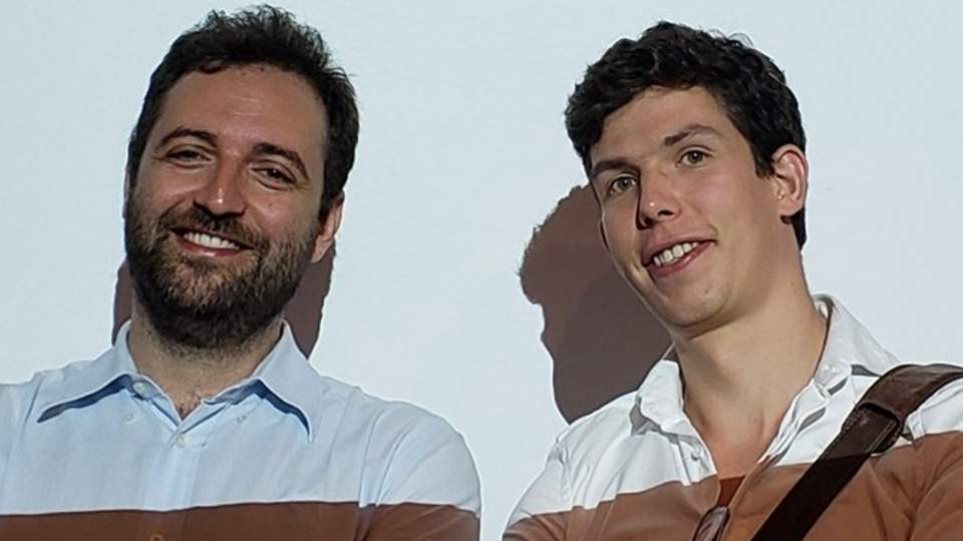Greek mathematician Dimitris Koukoulopoulos along with his Oxford colleague James Maynard solved the “Duffin and Schaeffer conjecture” that has puzzled mathematicians of Analytic Number Theory for 78 years.
The 35-year-old scientist is an associate professor of Mathematics at the University of Montreal, and, together with Oxford University research professor James Maynard (32), has been able to prove or solve, in the language of mathematics, the “Duffin and Schaeffer conjecture”.
Koukoylopoulos spoke to the Athens – Macedonia News Agency about his endeavor and his background.
The “Duffin-Schaeffer conjecture”
The “Duffin-Schaeffer conjecture” expressed in 1941 by mathematicians R.J. Duffin and A.C. Schaeffer mentions the criteria we can set in order to approximate numbers if we exclude some denominators. The two mathematicians also introduced a detail that says that if we exclude some denominators, even a sparse subset of them, some numbers may never be approximated.
Koukoulopoulos says that in the “Duffin-Schaeffer conjecture” there is a duality of a very sharp separation that states on the one hand that you have left a large margin so that with the denominators you have, you can approximate all the numbers, and on the other, if you were too ambitious and with the restrictions you put in, you couldn’t approximate any number. “So there are these two worlds where we can get almost all the numbers in one and almost none in the other, but there is a simple criterion that decides when we stumble upon each case.”
Around 1990, there were some results that approached the solving of the problem, but the conjecture remained unsolved until 2019, when it was fully proved by Dimitris Koukoulopoulos and James Maynard. The young mathematicians managed to solve one of the central problems in the field of “metric diophantic approach” after 78 years.
The history of the problem
Koukoulopoulos explains that this problem belongs to the field of number theory and is called a “diophantic approach” in honor of Diophantus, an Alexandrian Greek known for the Diophantine equation and was concerned with approximating fractional numbers.
“Most numbers, such as the number π, which is a mathematical constant defined as the ratio of the circumference to the diameter of a circle (π = P / d) and equals 3,14159265, occurs very often in Mathematics, in Physics. and if one sits down and writes the decimal numbers to give an approximation of that number, they will find that they never end. People can not but computers can work with such complex numbers and when we want to do things we want simpler approaches. If I write the decimal numbers of π and stop at 3.14 I get an approximation of the number with an error. I can write this number 3141/1000 which is a fraction approaching π, but in fact the ancient Greeks also knew that a very good approach of π using much smaller numbers is the fraction (22/7) that uses a denominator a lot smaller. Its denominator is only 7 while the denominator of the other fraction is 1000. The second fraction has much less complexity. And the question is if we can use denominators of a barrier up to 1 millionth, how good an approximation of a number can we get to? In such big questions, the ‘diophantic approach’ needs a simple fraction to find simple numbers approximations.”
The solution of the 78-year-old mathematical riddle does not necessarily mean that it will have a practical application in life. “I don’t know if there will be any concrete application. In theoretical mathematics it would be nice to see your work applied in real life, but the nature of theoretical mathematics is such that applying ideas can take many years until something is done or even an indirect contribution is made. ”
He adds that in theoretical mathematics, as in most theoretical sciences, you work intensively even for the rest of your life to understand and solve a question without necessarily knowing if it will have real-world implications. However, he points out that funding for research in theoretical mathematics is fundamental because in ways we cannot understand, it affects research in applied mathematics, engineering and physics.
Education background
Dimitris Koukoulopoulos finished high school in Kozani and passed the Panhellenic exams to study mathematics at the Aristotle University of Thessaloniki. Then he got a post-graduate degree at the University of Illinois and from there he followed his mentor Kevin Ford at Princeton where he got a PhD. Then he continued at the University of Montreal and worked with Andrew Granville on a post-PhD program.
See all the latest news from Greece and the world at Greekreporter.com. Contact our newsroom to report an update or send your story, photos and videos. Follow GR on Google News and subscribe here to our daily email!




